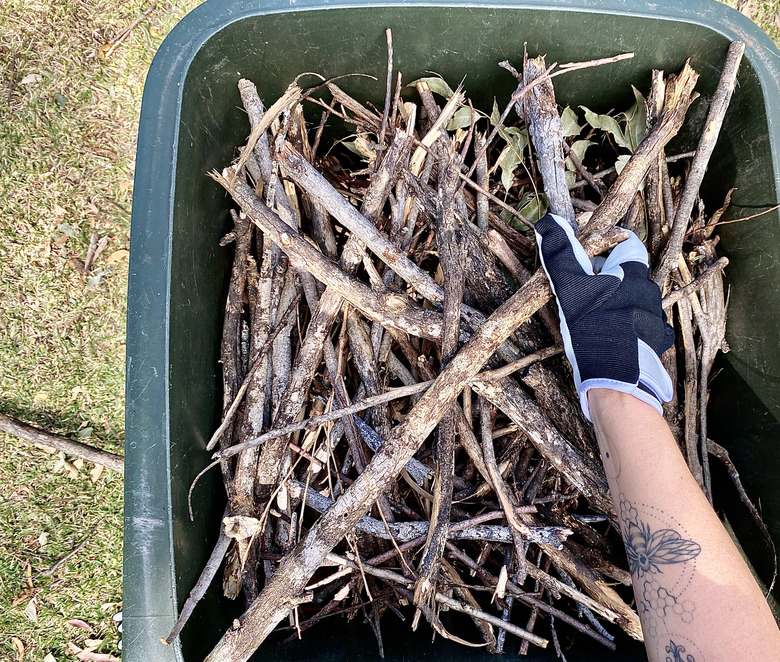How To Burn Yard Waste
We may receive a commission on purchases made from links.
It may be tempting to burn yard waste instead of bagging or composting it, but before doing so, it's important to know how to do it safely and in a way that's allowed in your area. Many regions have specific regulations that must be followed when it comes to any open fires, and the rules may require getting permission before burning anything. If you live in an urban area and have a small yard, it may not be allowed at all. It's also important to know what you're burning, as some types of yard waste emit toxic fumes when burned, and these fumes may cause health problems.
Check Your Local Regulations First
Check Your Local Regulations First
No matter where you live, the first step in burning yard waste is to make sure you're allowed to do so. Common sense often applies for these regulations; for instance, if you live in a highly populated urban area with small yards, your city most likely won't allow the burning of any yard waste. If wildfires are common in your area, your locale may not allow burning at all or may allow it only at designated times of the year. For instance, New York no longer allows burning yard waste in the second half of March through the first half of May, which has significantly reduced the number of wildfires.
Even if your area does allow the burning of yard waste, the region may limit what can be burned or where. For instance, New York allows smaller tree branches and limbs to be burned in yard waste in rural areas but not leaves. The state of Washington allows yard waste fires of less than 4 feet wide and long and 3 feet high, and the fire must be more than 50 feet from any structure. The state also requires that the fire is attended at all times, that water is on hand, and that a permit is granted first.
Warning
If wildfires have occurred in your area recently or if there's a drought, it's better not to burn yard waste, as even a small ember carried by the wind could cause a fire.
Don't Burn Poison Plants
Don't Burn Poison Plants
Poison ivy, poison oak, and poison sumac might end up in your yard waste after weeding but do not burn any of these plants. They all contain a toxic oil called urushiol, which is capable of causing itchy rashes when touched or lung irritation when burned. The oils are still in the plant even after it has dried out, so there's never a right time to burn them.
Burning Yard Waste Safely
Burning Yard Waste Safely
Once you're sure it's safe and legal to burn yard waste in the site you've selected for the fire, set yourself up for safety. Don't light a fire on a windy day or some embers could blow onto nearby flammable materials, or the fire's smoke may irritate your neighbors. Only burn completely dry material; wet matter may cause excessive smoke. Even if your community doesn't have rules as to where to burn yard waste, it's best to do it in an area away from nearby structures and away from shrubs, bushes, and trees.
Choose a bare dirt or gravel location about 10 feet in diameter and set the yard waste in the middle of it. Surround the burn pile with bricks or rocks if even a few random weeds grow within the chosen location, as the goal is to prevent anything from catching fire, including those weeds. Don't burn anything if the grass and other nearby plants are overly dry, as it won't take much for them to ignite. Wet the immediate area outside the burn pile before starting the fire and keep a hose or plenty of water handy just in case.
Make sure branches and plant clippings are small enough to fit in the burn pile. Cut them to 3 feet or so to keep the fire to a manageable size. Don't add cardboard, junk mail, or other household trash to the fire, as the burning of such materials isn't allowed in most areas. Never leave the area while the fire burns. Once you're certain everything has burned or if you have to leave, soak the materials with water and double-check that no embers remain.
